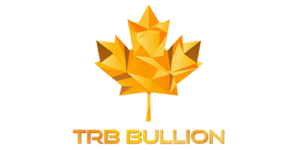Time and Time again, many central governments have turned to interest rate hikes as an effective measure for tackling inflation. The U.S Federal Reserve announced an increase in interest rates to between 0.25% – 0.5% back in March. This was its first increase since 2018.
As an investor, what does this mean to your portfolio? And how does it affect the gold price?
In this article, we’ll explain the essence of interest rates and how they affect the gold price.
Understanding Interest Rates
Interest is the amount paid by a borrower to a lender over an amount loaned. The interest rate would be a percentage of the loan expected to be paid together with the original loan. For instance, if a bank receives a loan of $20,000 with an interest rate of 35%, the total amount payable would be $27,000, with the interest rate accounting for the additional $7,000.
When we consider the Fed’s interest rates, we mean the interest rates offered by the Central Bank to domestic banks over short-term to long-term loans.
The Fed’s interest rates serve as a measure to control the economy at any given time. Jerome Powell, on the ability of the Fed to assign interest rates, stated;
“If we conclude that it is appropriate to move more aggressively by raising the federal funds rate by more than 25 basis points at a meeting or meetings, we will do so. And if we determine that we need to tighten beyond common measures of neutral and into a more restrictive stance, we will do that as well,”
In operation, the Feds would lower interest rates to promote the large-scale borrowing needed to expand the economy. Conversely, if the plan is to constrict the economy, interest rates get hiked, encouraging large-scale saving while discouraging borrowing.
Interest rates and inflation
During inflation, prices of goods and services experience significant levels of increase within a short period. This leads to a decrease in currency purchasing power. In perspective, goods worth $1 pre-inflation may skyrocket to $5 during inflation. This period is also marked by plummeting stock and bond prices as people favor savings over investments that offer little to no returns.
During this period, interest rates are usually increased to match/ control these rising levels of prices. High-interest rates reduce individual and business borrowing and spending power. This means that your car, credit card loans, and mortgage rates would increase, thereby reducing your purchasing power. In the end, demand is reduced, which effectively clamps down on the surging price, leading to more price stability.
How do Interest rate Hikes Affect Gold Prices?
Ordinarily, one would assume that since most U.S stocks and bonds prices are negatively influenced by interest rates, gold wouldn’t be an exception. And this negative influence on gold would reduce the incentives for investors to buy gold. The good thing here is that gold prices do not move in correlation with U.S stocks and Bonds.

Historically, the gold price hasn’t shown many relationships with interest rates. In the 1970s, the rapidly high-interest rate was reflect in a massive gold bull market. Similarly, in the 1980s, a 16% increase in interest rate was also reflected in a Gold price growth from $50 an ounce to $850 an ounce. However, in the 2000s, the gold bull market continued to soar despite interest rates declining significantly.
Many investors seize this opportunity to buy gold when interest rates are high. This serves as an alternative to other declining investments like stocks and bonds. In terms of safe-havens, gold bars and gold coins could be a great asset to protect your portfolio from the negative impacts of rising interest rates.
If you are interested in learning more about investing in gold and other precious metals, TRB Bullion is the place to start!
